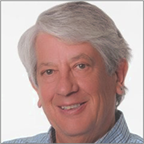STORIES ARE ABOUT THE AUTHOR
What we often call history is really stories. We can find out when Fort Sumpter was fired on (1861) and when Lee surrendered the Army of Northern Virginia to Grant (1865). On the other hand, ask people what the Civil War meant, and you'll get a range of opinions: stories. When we reminisce, we tell stories. And when we think of who we are and what we do, we tell stories as well. Though stories are wonderful and can be illuminating, let's never forget that they're fiction.
"The Civil War was all about slavery" and "The Civil War was all about states' rights" are two different stories. While these two stories tell a little bit about history, they tell us a great deal about the people who tell them. Our stories identify and shape us.
Leadership in organizations shows up in two kinds of stories. We try to coalesce what we do as well as how and why we do our work through stories of. "Our #1 goal is a satisfied customer!" is an example. We understand who we are by stories we create about us and others: "I'm a team player, but Harriett seems to live in her own world."
On one hand, stories are always fiction (otherwise, we'd all agree on everything). At the same time, they reveal more about the author than about the subject: stories not only reflect our truth, they shape it.
THE STORY OF
Mission statements, vision statements, and such are attempts to codify stories of our ideal selves in what we do and how we connect at work. The soaring eagle with a poetic caption is a pre-manufactured story of, a snapshot (literally) as likely to contribute to cynicism as to esprit de corps, because it's imposed, not generated. The story of thrives when it's communal, rather than word-crafted as if it's to be inscribed on a plaque or a monument, or a tombstone. In truth, the reality of our work community evolves: our story of is never static. And it's a special kind of fiction in that it pulls us toward an ideal, like a fable or a parable.
As we lead (and that's not a function of position, but of perspective), we can examine and reframe the story of what we do. Moreover, we can encourage others to co-author, to share the generation of who we are and why we move forward, not just of what we make. Revisit that story, candidly, from time to time and seek to adjust the story and our actions toward congruence.
THE STORY ABOUT
We also write another kind of story every day. That's the story about ourselves and each other. As long as we remember that the story about is fiction, we're on the right track. We judge ourselves as greater or worse than others see us. Always. A friend of mine suggests envisioning three circles. One represents how we see ourselves, the second how others see us, and the third who we really are. The closer together we can move those circles, by the stories we use for guidance, the better we can lead. And we move those circles by listening to feedback and by questioning our own assumptions: stories from without and stories from within.
Finally, there's the story we write about others. It's taken me a long time to learn that the story I write about others is about me: "In the absence of data, we make it up." We write stories about other people as if the stories are true of them, but the metaphorical pen (or keyboard) that writes that story is powered by the fingers of our bias.
Stories are alive, not statements but dialogues. We humans have been asking What are we here for? since we gained (or were cursed with) self-consciousness. That same need for meaning applies to the huge block of our lives we invest in our livelihoods. Let's get in the habit of revisiting the story of, and let's be skeptical of the story about.
For you auditory learners, here's a link to this topic on the Learning Chaos Podcast. Enjoy:
https://app.stitcher.com/browse/feed/67071/details/e/66798638#/
About the author

Mac Bogert is President of AZA Learning and a regular columnist for the Learning Counsel. He began his career as an English teacher. For the past 25 years, Mac has focused on the intersection of leadership and learning. In between, he is a musician, professional actor, yacht charter captain, staff development consultant, curriculum designer and author of Learning Chaos.










